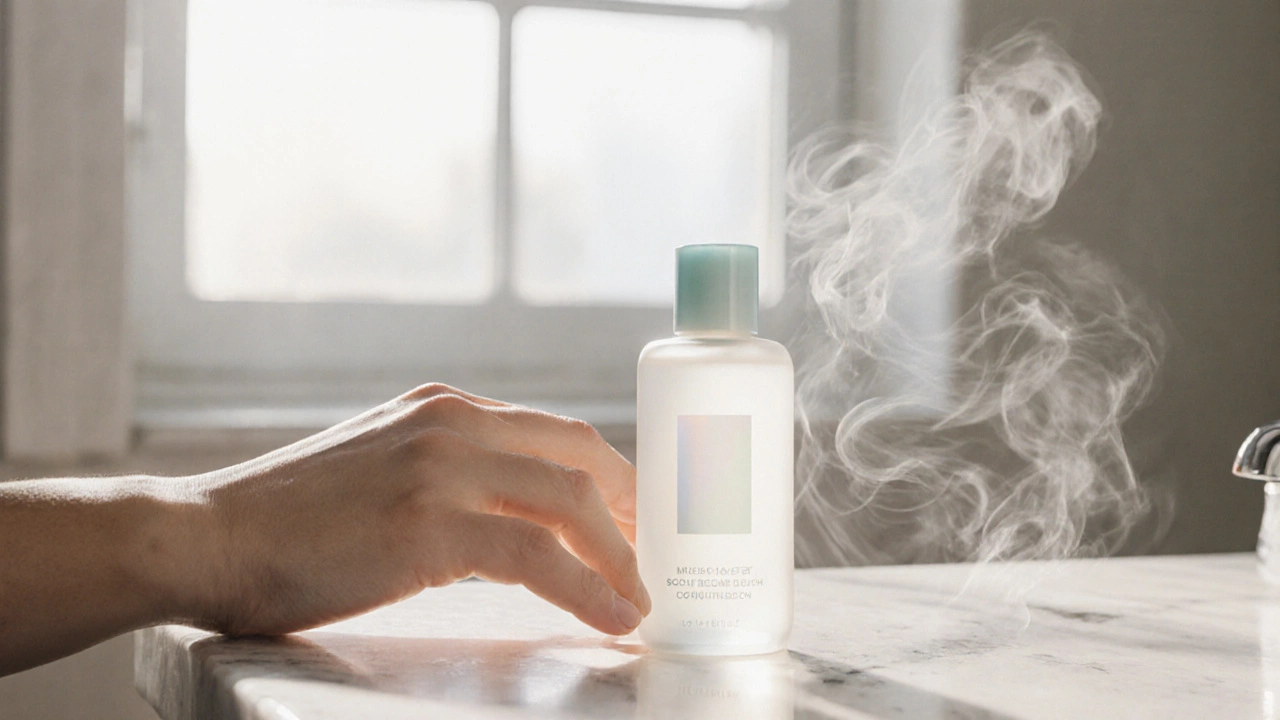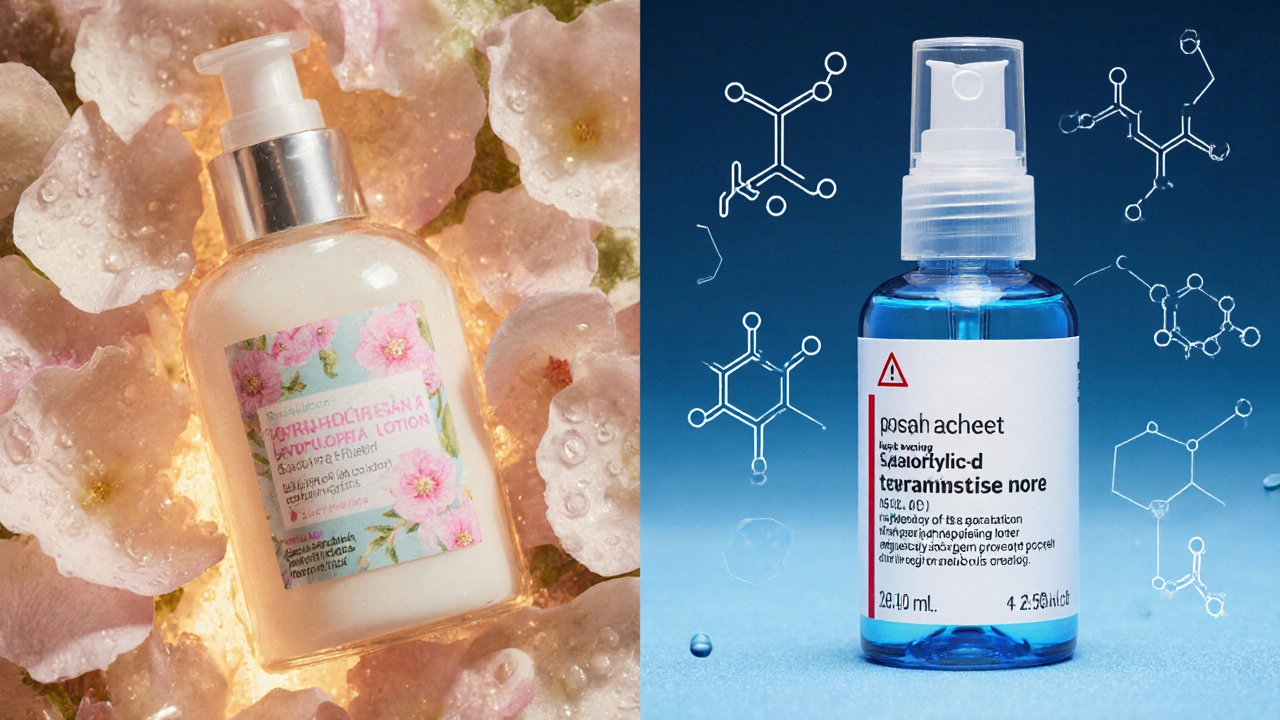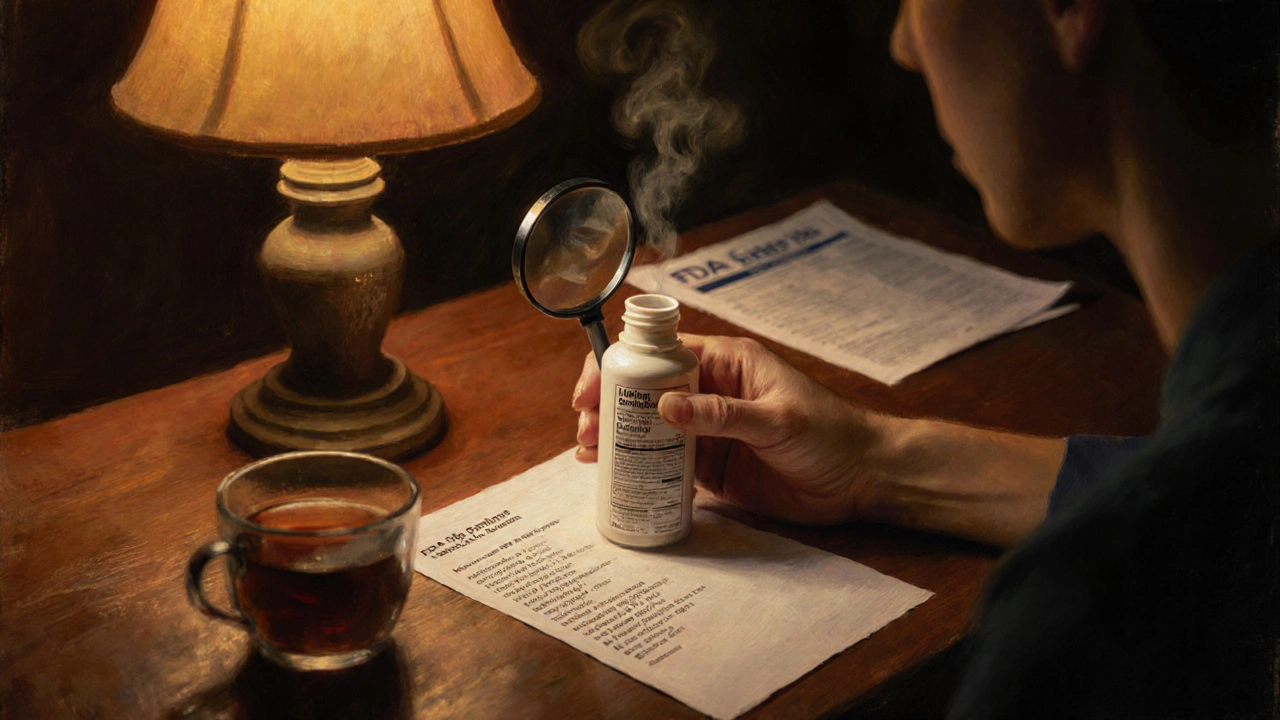Is Lotion a Cosmetic? Understand the Classification and What It Means for You
 Oct, 10 2025
Oct, 10 2025
Lotion Classification Checker
Classification Result
How It Works
This tool determines if a lotion is a cosmetic or drug based on two key factors:
- Active Ingredients: Substances like hydrocortisone, salicylic acid, or benzoyl peroxide indicate a drug classification.
- Marketing Claims: Statements about treating or preventing conditions suggest a drug.
Example: A lotion with "hydrocortisone" and a claim like "reduces inflammation" would be classified as a drug.
When you reach for a bottle of lotion is a liquid or semi‑solid preparation applied to the skin mainly to moisturize, soothe, or protect, you might wonder whether it falls under the umbrella of cosmetics, medicines, or something in‑between. The answer isn’t as simple as a yes or no, because the label depends on ingredients, claims, and the rules set by regulators like the U.S. Food and Drug Administration (FDA) or the European Union (EU). This guide breaks down the legal definitions, the gray areas, and the practical steps you can take when you read a label.
What Exactly Is a Lotion?
A lotion is essentially a moisturizer designed to be lightweight, spread easily, and absorb quickly. Typical ingredients include water, emollients (like oil or glycerin), humectants (such as hyaluronic acid), and sometimes fragrance or botanical extracts. The primary purpose is to add or retain moisture in the outermost layer of skin, known as the skin barrier. When a product does exactly that, most regulators categorize it as a cosmetic.
How Regulators Define a Cosmetic
In the United States, the FDA defines a cosmetic as "any article intended to be applied to the human body for cleansing, beautifying, promoting attractiveness, or altering appearance." The key phrase is "intended to be applied" and the focus on appearance. The European Union’s Cosmetics Regulation (EU) No 1223/2009 uses a similar wording, adding that cosmetics must not have a therapeutic effect.
Notice the word *therapeutic*. If a product claims to treat, prevent, or mitigate a medical condition (e.g., acne, eczema, or sunburn), it may be re‑classified as a drug. That shift brings a whole new set of testing, labeling, and approval requirements.

When Does a Lotion Cross the Line into a Drug?
Regulators look at two main factors: the ingredients and the claims. Here’s a quick way to spot a potential drug lotion:
- Active Ingredient with a Therapeutic Role - Substances like hydrocortisone, salicylic acid, or benzoyl peroxide are considered active pharmaceutical ingredients (APIs). If a lotion contains any of these, the product is typically a drug.
- Explicit Health Claims - Statements such as "reduces inflammation," "heals sunburn in 2 hours," or "prevents bacterial growth" move the product out of the cosmetic realm.
For example, a simple aloe‑vera lotion that says "soothes skin after sun exposure" is usually a cosmetic, whereas an aloe‑vera lotion that claims "provides 24‑hour sunburn relief" lands in drug territory because it promises a therapeutic effect.
Comparison: Cosmetic Lotion vs. Drug Lotion
| Aspect | Cosmetic Lotion | Drug Lotion |
|---|---|---|
| Primary Purpose | Moisturize, soften, or improve appearance | Treat or prevent a medical condition |
| Typical Ingredients | Water, emollients, humectants, fragrance | Active pharmaceutical ingredients (e.g., hydrocortisone, salicylic acid) |
| Regulatory Path | Notification to FDA (U.S.) or compliance with EU Cosmetics Regulation | Pre‑market approval, clinical testing, drug labeling rules |
| Label Claims | "Leaves skin feeling smooth," "adds a subtle glow" | "Reduces redness by 50% in 4 hours," "clears acne" |
| Safety Review | Ingredient safety assessed, but no required clinical trials | Rigorous safety and efficacy trials required |
How to Tell What Your Lotion Is
Reading the label is your first line of defense. Follow this checklist:
- Scan the active ingredients list. Anything labeled as "active" or with a percentage (e.g., 1% hydrocortisone) likely makes it a drug.
- Look for bold health claims. Phrases like "treats eczema" or "prevents infection" signal a therapeutic intent.
- Check the packaging for a "Drug Facts" panel. In the U.S., drug lotions must include this section.
- Verify the marketing language. If the brand emphasizes "beauty" or "skin smoothness" without medical promises, it’s leaning toward cosmetic.
- Consider the regulator: In the EU, look for the “cosmetic product safety report” reference. In the U.S., a lack of an NDA (New Drug Application) usually means it’s a cosmetic.
When in doubt, a quick search of the product’s UPC on the FDA’s Cosmetics and Personal Care Products Database can confirm its classification.

Why the Distinction Matters
Knowing whether your lotion is a cosmetic or a drug impacts both safety and expectations. Cosmetic lotions aren’t required to prove they work; they just must be safe for normal use. Drug lotions undergo clinical testing, so you can expect a measurable effect-but they can also carry side‑effects and stricter usage instructions.
For everyday users, the practical takeaway is simple: if you need a preventive or therapeutic benefit, reach for a product that’s clearly labeled as a drug. If you just want a pleasant feeling and a nice scent, a cosmetic lotion will do the job.
Quick Takeaways
- A lotion that only moisturizes and makes skin look smoother is typically a cosmetic.
- Ingredients like hydrocortisone or salicylic acid, plus health claims, turn a lotion into a drug.
- Regulators (FDA, EU) base classification on intended use and claimed benefits.
- Read the label: active ingredients, claim language, and any “Drug Facts” panel.
- Choosing the right product hinges on whether you need therapeutic action or just everyday moisturization.
Frequently Asked Questions
Can a lotion be both a cosmetic and a drug?
Yes, a product can be marketed as a cosmetic for its moisturizing properties while also containing a drug component for a specific therapeutic claim. In such cases, the drug claim dominates the regulatory classification, meaning the product must meet drug‑level safety and efficacy standards.
Do natural or organic lotions avoid drug classification?
Not necessarily. Even a 100% natural lotion can become a drug if it contains an active ingredient that treats a condition or makes therapeutic claims. The classification hinges on function, not on ingredient source.
What happens if a cosmetic lotion is mislabeled as a drug?
Regulatory bodies can issue warning letters, demand product recalls, or impose fines. Manufacturers are required to correct the labeling and, if necessary, submit the appropriate drug approval documentation.
Are drug lotions more expensive than cosmetic ones?
Generally, yes. The added cost of clinical testing, regulatory filing, and stricter manufacturing controls tends to raise the price of drug‑classified lotions compared to standard cosmetics.
Where can I verify a lotion’s classification?
In the U.S., use the FDA’s Cosmetics and Personal Care Products Database. In the EU, consult the Cosmetic Products Notification Portal (CPNP). Both platforms let you search by product name, manufacturer, or UPC.
Next time you pick up a bottle, you’ll know exactly where it sits on the cosmetic‑vs‑drug spectrum. And if you’re ever unsure, just remember the simple rule: **if it claims to treat a condition, it’s probably a drug**.
